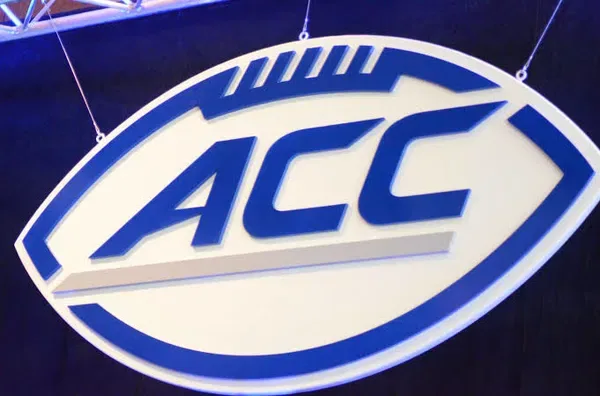A Conference in Crisis or Just Smoke and Mirrors?
Is the ACC quietly lurking in the shadows of the Big Ten and SEC, or is it just playing a dangerous game of financial deception? While powerhouse conferences like the Big Ten and SEC bask in the limelight, rolling in multimillion-dollar deals, the ACC has largely stayed under the radar. That is—until a shocking claim about its media revenue ignited a firestorm of controversy.
It all started when sports analyst Tony Altimore dropped a bombshell, posting a graphic that claimed ACC schools would rake in a staggering $51.3 million per year from media rights between 2025 and 2031. If true, that would mean the ACC had suddenly outpaced the Big 12 by a jaw-dropping $20 million per school per year! But hold on—was this a groundbreaking financial revelation or just a classic case of what some are calling an “offseason Twitter lie”?
Big 12 Insider Calls Foul: “That’s a Complete Lie”
The uproar reached a fever pitch when Big 12 insider Drake C. Toll joined TJ Pittinger on the College Football Addiction podcast on February 17. The conversation revolved around one burning question: Is the ACC really that far ahead of the Big 12?
Drake didn’t hold back, calling Altimore’s claim blatantly false:
“$20 million ahead if you ask Tony Altimore, who posted a graphic that utilizes some Florida State sourcing to say that ACC schools are making, according to his graphic, $51.3 million per year… But here’s the only problem with that, TJ—it’s a complete lie.”
If that wasn’t enough, Altimore dug in his heels and refused to delete or correct his claim—even as sports finance experts dismantled it. That only added fuel to the fire.
Exposing the Real Numbers: The ACC’s Cash Problem
Enter ESPN’s Jeff Fuller, the man with the receipts. He pulled official data from USA Today and Sportico, and the results were damning:
- The ACC’s total conference distribution in a recent year was only $44.8 million per school, per USA Today’s Berkowitz.
- Sportico’s analysis found that the average ACC public school reported only $34.6 million in media revenue.
- Yet somehow, Altimore’s graphic inflated that number by over 40%.
So where did this fantasyland figure of $51.3 million come from? The likely answer lies in financial sacrifices made by new ACC members—Cal, Stanford, and SMU. The ACC’s weighted revenue-sharing model has created a deep divide in the conference, leading to resentment and financial strain among its traditional powerhouses.
And speaking of resentment…
Florida State & Clemson: Trapped or Ready to Break Free?
Two of the ACC’s most prized possessions, Florida State and Clemson, have grown restless with the conference’s financial situation. Their frustration isn’t without merit—compared to the SEC and Big Ten, the ACC’s revenue streams are shockingly inferior.
Consider this:
- The ACC inked a long-term TV deal with ESPN until 2036, locking in its members for the foreseeable future.
- The deal secures $425 million annually, but that only amounts to around $25 million per school—a fraction of what SEC and Big Ten programs will earn.
- By 2027, the gap between ACC and SEC payouts will widen to $30 million per school per year.
- Over time, Florida State and Clemson could lose out on a combined $600 million in potential earnings if they stay put.
With such a massive financial disparity looming, both schools are desperately searching for an escape route. But the ACC isn’t going down without a fight.
The ACC’s Last-Ditch Effort: Bribery or Smart Business?
To keep its heavyweights from bolting, the ACC introduced two financial initiatives:
- The Success Initiative – The more a team wins, the more money it gets. A simple idea, but does it really level the playing field?
- The Brand Initiative – This heavily favors big-name programs, giving them a bigger slice of the pie while the smaller schools get crumbs.
Locked On ACC’s Alex Donno sees these moves as the conference trying to pacify Florida State and Clemson, but at what cost? This could divide the ACC even further, creating a two-tiered system where the rich get richer and the struggling programs get left behind.
But here’s the kicker—these band-aid solutions might not be enough.
The Great ACC Exodus? 2031 Could Change Everything
While these financial lifelines may delay the inevitable, 2025–31 is a ticking time bomb for the ACC.
By 2031, when the next major realignment window opens, the conference could face a mass exodus of its most valuable programs. Florida State and Clemson aren’t the only ones eyeing the door—other schools could follow suit, leaving the ACC in shambles.
And if that happens, the ACC’s so-called $51 million media bonanza will be nothing more than a footnote in college football’s history of financial blunders.
So, is the ACC’s future as bright as Altimore claims, or is this just a desperate ploy to stay relevant in a world where the SEC and Big Ten rule?
Only time will tell—but one thing’s for sure: the battle for college football dominance is far from over.
















